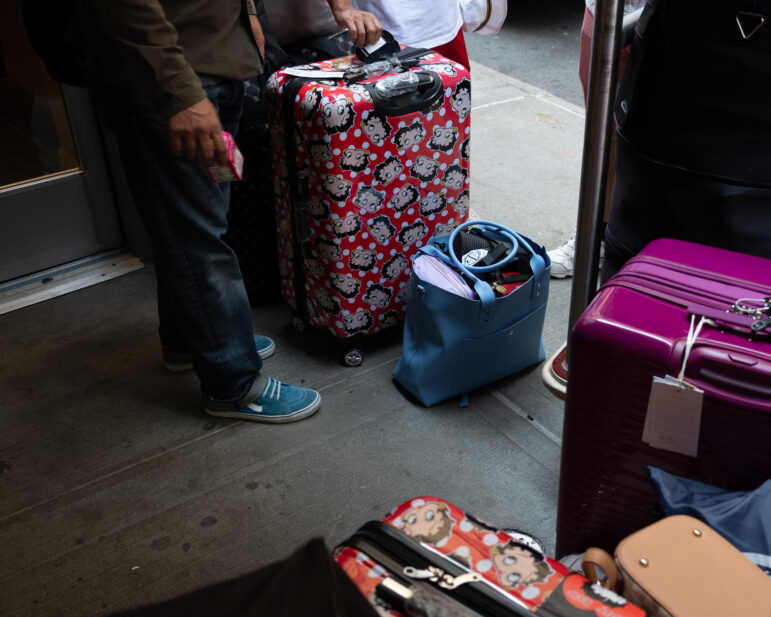
DHCR
The Division of Homes and Community Renewal is the agency that oversees rent regulations.
Whatever happens with rent regulations or 421-a over the next few days, one constant in the lives of the city’s 2 million rent-regulated tenants is the state agency tasked with oversight, the state Division of Homes and Community Renewal. And some question whether it is equipped to enforce whatever rent regime state lawmakers agree on.
While Gov. Andrew Cuomo has come out in favor of several reforms tenant leaders had been seeking, DHCR has seen its staff reduced during the governor’s time in office. The agency’s headcount is 683 in the current budget, down from 745 in 2011-2012, Cuomo’s first budget year.
“If it had [funding] it could function better. It’s overwhelmed by the case level. They don’t have the capacity. [More money] would make a huge impact,” says Susanna Blankley, director of CASA/New Settlement Apartments, a Bronx-based advocacy community organization that helps lower-income tenants on housing matters.
DHCR’s funding will rise from $580 million in fiscal year 2015 to $710 million in the current year, thanks mainly to the use of money from a settlement with JP Morgan. But most of the increase will be passed on to localities. Cuomo’s executive budget did say his plan would provide “full funding for the Office of Rent Administration which administers the New York City Rent Regulation program.”
The Office of Rent Administration is primarily the division with whom tenants must deal, and it receives the brunt of criticism. A recent audit conducted by state Comptroller Thomas DiNapoli described a highly dysfunctional agency, entrenched in its own complacency. In December, he faulted DHCR for the amount of time it takes to resolve tenant-driven complaints, which can include rent overcharges and illegal destabilization. “Officials have not established a criteria for how long it should take to assign, address and/or resolve tenant complaints,” the report found. The auditors found 31 percent of complaints took over a year to resolve, eight percent took two years and some took as long as four.
Cuomo in an early June Daily News editorial about his affordable housing plan touted his administration’s “innovation” of the Tenant Protection Unit, a division within DHCR which has authority to “investigate, audit and bring legal action against landlords who game unsuspecting tenants.”
By many accounts, the TPU has been quite successful, even re-regulating more than 40,000 illegally destabilized units, according to the agency. However, its very existence is in question. Real estate lobbying groups have challenged its legitimacy, and Senate Republicans have tried to defund it.
That DHCR has problems is one thing tenants and landlords might agree on—although they split over what exactly the problems are. Mitch Posilkin, general counsel to the landlord group Rent Stabilization Association, told City Limits in December: “On various levels, it’s pretty clear DHCR’s agenda is pro-tenant… [and] a hostile environment for owners. The amount of time it takes to process MCIs, the promulgation of rent code amendments… [there’s] an enormous issue with the way DHCR interprets law.”
The lowest point for DHCR came during and after the Pataki administration, according to Manhattan Sen. Liz Krueger. A slew of regulatory code changes were written with the assistance of the real-estate industry, Krueger explained, resulting in a maze of new of obstacles and roadblocks for tenants.
At the outset of Cuomo’s first term in 2011, Krueger submitted recommendations to improve the agency. She says she’s seen little action, although acknowledges the TPU as one blip of progress. “I’s different from DHCR as a whole in that they look for patterns of abuse, the worst scenario… and the big fish.”
DHCR did not reply by press time to a request for comment.
It’s not just that the agency’s budget has eroded, advocates say: The market DHCR is supposed to regulate has become increasingly fraught for the low-income tenants the agency is supposed to protect. Blankley’s group is concerned about the impact Mayor Bill de Blasio’s housing development plans will have on areas like Jerome Ave. in the Bronx.
“DHCR should … increase its funding to help harassed tenants. It should have dedicated money for the upzonings,” she says. “They need more protection.”
This story first appeared on City & State, with which City Limits is partnering to cover crucial housing policy stories in 2015.
City Limits coverage of public housing and New York’s rental affordability crisis is supported by the Charles H. Revson Foundation.








